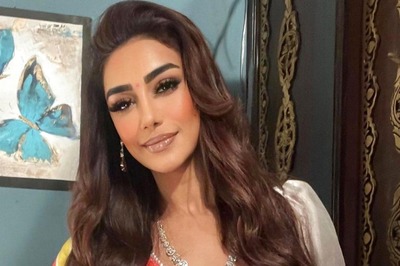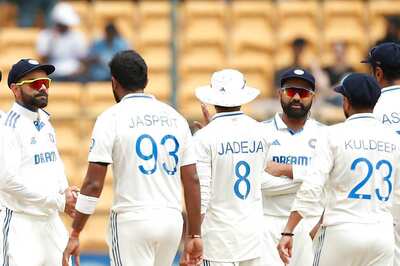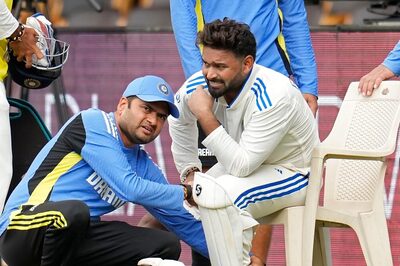
views
When Devaki Nilayamgode published her short memoir Yatra: Kattilum Nattilum, in 2003, it revealed the dark and oppressed world of an Antharjanam to the reading community of Kerala. She went on to write four books on the largely unknown life of Namboodiri women in Kerala till the reform movements threw open the claustrophobic illams. Devaki’s memoir, to be published in English soon, (Oxford University Press) is a collection of the writings selected from her books. The 85-year-old Antharjanam talks to Aswathy Karnaver on the genesis of the first ever memoir to be written by a Namboodiri woman. When did it occur to you that you had something to write about?I live with my daughter and her family in Thrissur. For most part of the day, my grandson, Tathagathan, and I were left to each other after his parents were off to their offices. I told him stories about the old times, my childhood, the people and the life I had known then and so on. Until then, the business of living life had not allowed me to reflect on my world as I had known it 50 years ago. When he was old enough for college, it must have dawned on him that the life I told him about was worlds apart from the one we are living now. He began telling me that I should put down those memories in writing. He was so adamant and his anxiety to see that life accounted for was so genuine that I began to share his faith that there was something to be written about. n Did you require help to enter the world of writing?He was also my editor in the beginning. But for that, I only wrote what came to me spontaneously. Bhashaposhini’s Editor K C Naryanan is a family friend and when he read the manuscript, he was certain that readers would be interested in it. And he published it in the annual issue of the magazine. It was well-received by the readers. In 2003, after my seventy-fifth birthday, I published a small memoir, Nashtabodhangalillathe. Encouraged by the response of the readers and Mathrubhoomi’s Kamalram Sajeev and O K Johnny, I published my second book, Yatra: Kattilum Nattilum. A small portion of ‘Nashtabodhangalillathe’ was translated and published in the journal Samyukta. That is how the Oxford University Press came forward to publish a compilation of writings selected from these books. What was the influence of reading on your life? Have you read Lalithambika Antharjanam’s Agnisakshi?I saw my elder sisters reading whatever books they could smuggle into the secrecy of their corridors. Our elder brothers who could borrow books from a nearby library left them under wooden stools which they sat on while eating food. I was fascinated by these sights and started reading to find out what the books contained. They were mostly Bengali novels like ‘Ananthamath’. Books soon became my dearest friends. Then, I chanced upon ‘Pavangal’ (Victor Hugo’s ‘Les Miserables’). That was the point when I came to know about human life in the outside world. It changed my outlook on life and people forever. Yes, I have read Agnisakshi, but much later in life. What were your expectations about life as a young girl?There were no expectations at all. Girls were not educated, had no opportunities to step out of our homes. There was nothing about life that nurtured any expectations. Did marriage mean any hope to the girls?The only two things a girl was taught to pray for were regular meals and a good husband. A good husband was perhaps the only thing that could even vaguely ensure a semblance of freedom or happiness in a woman’s life. Were you aware of the reform movements sweeping the Namboodiri community in the middle of the last century?No, we had no idea at all. The ‘akathalams’ of the ‘illams’ were so impervious. Newspapers never reached us. All we understood was that some people in the community had started going for modern education and were wearing more modern clothes. Some of the Nair community women who visited the ‘illams’ wore colourful silk blouses and saris. Did the other art forms you were exposed to like ‘kaikottikkali’ attract you?‘Kaikottikkali’ was a small vent to the artistic tastes of the girls. Though it was performed by women from Nair community, the Namboodiri girls could share the spirit of competition between the groups and they could join in making the songs. It was also a time when a certain freedom was allowed with the kind of language used. In songs, the opponents could be called names and we were exposed to that sort of vocabulary only on such occasions. But I was personally not attracted to them and never felt for singing and dancing the taste I had for reading. Can you tell us about your experiences in taking part in the reform movements?I joined it much later. The activities were led by men like V T Bhattathirppad. I remember going with a group of activists to stall a young girl’s marriage with an old Namboodiri. In about five or six years from then, the Yoga Kshema Sabha (YSK) was dissolved because we had become a community just like any other. The differences were evened out, at least on the surface. The leaders of YSK joined mainstream politics. And women like me were caught up in the running of the family. What kind of a home did you make? Did it hold on to the traditions?My husband’s family, Nilayamgode, was a progressive ‘illam’. My husband, Ravi Namboodiri, was a good human being and educated our two daughters and four sons. We showed love and care to our children unlike the cold relation parents had with their children in traditional Namboodiri ‘illams’.



















Comments
0 comment